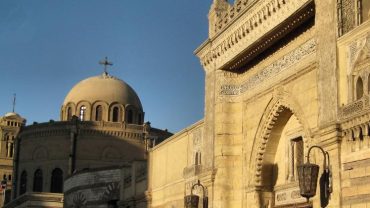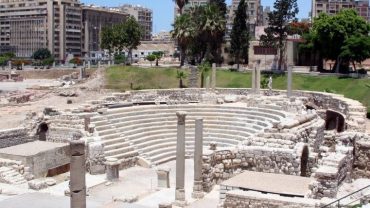Tomb of Ramesses IV | KV2 | History, Facts, discovery, Pharaonic Tombs, ancient Egyptian history | Egyptian Pharoah | Twentieth Dynasty
Who is Ramesses IV? Facts About King Ramesses IV (1155–1149 BC)
Ramesses IV was the fifth son of Ramesses III and his co-regent at the end of his life. He was also the third Pharoah of the twentieth dynasty of ancient Egyptian history. King Ramesses IV came to the throne after his father was mostly killed by one of his secondary wives called Tiye to put her son Pentawer on the throne. Fortunately, she was arrested and executed and Ramesses IV found his way to the throne. He ruled for about 6 years and the great Ramesside dynasty will decline. Afterward, weak kings will rule Egypt and some of them were foreigners.
Ramesses IV died and Ramesses V his brother succeeded him on the throne. The Pharoah was buried in his tomb in the Valley of the Kings on Luxor west bank. Meanwhile, his body was found in the royal cache in the tomb of Amenhotep II KV 35 and right now in the National Museum of Egyptian Civilization.
Where is Ramesses IV Tomb?
The tomb of Ramesses IV (KV 2) is located in the main Valley of the Kings, Luxor west bank of the Nile, Egypt. The tomb is the second oldest tomb discovered in the Valley of the Kings after that of Ramesses I.
Facts about the King Ramesses IV tomb KV2, Valley of the Kings, Luxor, Egypt
- The tomb is located in the main valley to the south of KV 1 of Ramesses 1
- KV 2 is known as the hotel of the Valley of the Kings as early explorers like Champollion, Robert Hay, Rossellini, and Theodore Davis used to stay
- It has a lot of Coptic and Greek Graffiti
- There is some Coptic Graffiti decorating the walls of the tomb dating to the Roman era
- Almost 90 meters long is the tomb
- One of the biggest sarcophagi found inside the tomb of Ramesses IV was decorated with the goddess Nut (Nout) goddess of the sky.
- 656 graffiti decorating the walls of the tomb
- Most of the religious books are found here such as the Litany of Ra, the Book of Caverns, the Book of the Dead, the Book of Amduat, and The Book of the Heavenly Cow.
- Archeologists found Shabtis, many ostraca, fragments of wood, faience, and glass inside the tomb.
Who discovered the tomb of Ramesses IV?
The tomb is one of the oldest discovered tombs in the Valley of the Kings and it has been visited and measured by Pococke as early as 1737. Champollion visited the tomb on his second visit to Thebes or Luxor. Then, in modern times the tomb was first discovered by Edward Ayrton during 1905-1906. Later on, Howard Carter excavated the tomb again in 1920.
Restoration work in the tomb of Ramesses IV
The tomb was closed for restoration in 2022 and it was reopened for the visit starting on November 1, 2022.
The plan of The Tomb of Ramesses IV KV 2 | Tomb Layout
First of all, to reach the tomb of Ramesses IV at the Valley of the Kings, you need to cross the entrance where they check your ticket. Then, walk straight into the main Valley like 100 m, it will be the 2nd tomb on your right-hand side
- Entryway A
- Gate B
- Corridor B
- Gate C
- Corridor C
- Gate D
- Corridor D
- Gate E
- Chamber E
- Gate J
- Burial Chamber J
- Gate K
- Corridor K
- Side Chamber Ka
- Gate Kb
- Side Chamber KB
- Gate KC
- Side Chamber KC
The inscriptions & decorations | Tomb reliefs
First of all, to reach the tomb of Ramesses IV at the Valley of the Kings, you need to cross the entrance where they check your ticket. Then, walk straight into the main Valley like 100m, it will be the 2nd tomb on your left-hand side.
The original paintings remain intact and there are also lots of religious books on the walls. Like most of the tombs in the Valley of the Kings, the entryway has steps divided by a central ramp descending to the first corridor. The entrance has a lot of Coptic graffiti and a Coptic cross.
Entrance of the tomb of Ramesses IV
At the top of the entrance, there is a sun disc and inside it the scarab betel symbol of the god Khepri, and the Ram-Headed god Khnom, the god of creation. On both sides of the sun disc, we can see goddess Isis to the left and Nephites to the right raising their hands flanking king’s cartouches.
The first long corridor of the tombs has the Litany of Ra and the relation of the kings with the god such as Ra-Horakhty. At the same time, this corridor has a lot of Coptic graffiti and scenes of saints and crosses.
The ceiling of this corridor is an amazing-colored ceiling with vultures, falcons, and winged scarabs.
The second corridor slopes gently and is decorated with the Litany of Ra. There are two niches at the beginning of the corridor decorated with the manifestations of Ra.
The third corridor is decorated with the first and second divisions of the Book of Caverns. This corridor has a vaulted ceiling decorated with the names of the king. There are two vertical shafts at the end of the corridor.
After the third corridor, there is a small chamber with the final judgment scenes of the dead person. Besides, texts from the Book of the Dead, including spell 125 in seventy-four columns.
Burial Chamber of Ramesses IV
The Book of Gates is decorating the burial chamber, the sixth and ninth hours of the Imydwat. It has a very beautiful red granite sarcophagus.
After the burial chamber, there are a corridor and 3 side chambers on both sides decorated with the figures of the king as a mummified mummy.
Measurements of the tomb of Ramesses IV
Maximum height: 5.22 m
Minimum width: 1.24 m
Maximum width: 8.32 m
The length: is 88 m
Total area: 304 m²
Volume: 1105 m³
Decoration of the tomb of Ramesses IV
Painting
Sunk relief
Things found inside the tomb of Ramesses IV
Huge Sarcophagus
Shabtis, many
Ostraca,
Fragments of wood
Faience
Glass
Tomb Robberies at the End of the New Kingdom
Tomb robbing in ancient Egypt was recognized as a serious problem since antiquity. The tomb of Tutankhamun gave us a perfect example of what we can find inside a royal tomb. That was the reason why robberies entered the tombs right after burying the kings.
Visiting Hours of KV2?
As long as the tomb of Ramesses IV is one of the Valley of the Kings’ tombs, the visiting hours to KV 17 are the same as the opening hours of the Valley of the Kings. Valley of the kings is open daily from 06.00 am to 17.00 pm but ticket windows close at 16.30 pm. That means you can visit the tomb daily between 06.00 am to 17.00 pm.
How much is the Ramesses IV tomb ticket?
kindly put in your mind that you will need to purchase two tickets. Entrance ticket for the Valley including access to 3 tombs and a ticket for the electric car. Ticket windows are inside the visitor center. The entrance ticket includes 3 opened tombs and KV 2 is one of them.
Tips for visiting the tomb of Ramesses IV
The first piece of advice we can tell, visit the valley of the Kings and the tomb of Ramesses IV with an archaeologist guide. Meanwhile, they will provide you with detailed information about the Pharaonic Tombs and ancient Egyptian History during The New Kingdom of Ancient Egypt.
Read before you go to enjoy more
Take extra water with you and some snacks, especially in the summer months, and drink at least 5 small bottles of mineral water to not hydrate.
Small change for the WC (5 L.E) per person
Do not forget to take your hat, sunglasses, and suncream with you
Cotton dress during summer
There is a café facing king Tutankhamun’s tomb in the valley of the kings if you like to drink something or have an ice-cream
Kindly Note:
That was a brief idea about the tomb of one of the ancient Egyptian Pharaohs and an example of one of the Pharaonic tombs in the Valley of the Kings. If you like to visit more Pharaonic tombs and learn more about the best things to do in Luxor, Egypt Goota Travel highly recommends Luxor Tours to
KB 8 Merenptah tomb
KV 14 Tausert and Setnakht
If you like to know about the best tombs you can visit against the charge, here are the three extra ones
KV9 – Ramesses V, Ramesses VI
KV62 – Tutankhamun
KV 17 – Seti I
That was about the Valley of the Kings and the Pharaonic tombs but if you like to know more about Egyptian history when booking Luxor Day Tours from Hurghada or Marsa Alam and Luxor. If you like to learn more about Ancient Egyptian civilization, and Pharaonic temples, we recommend the following sites
Ramesseum




Comment (0)